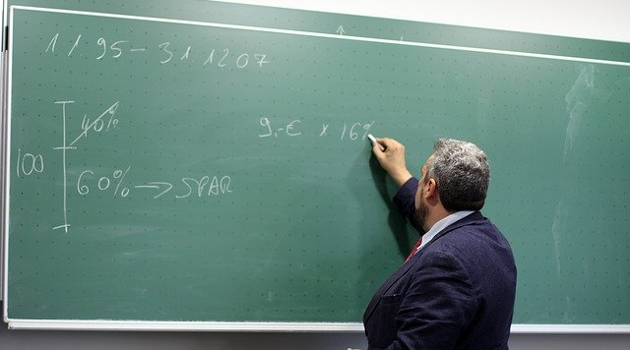To help me follow policy developments, I get 30-plus daily emails from various news outlets and institutions, and I scroll through these messages to see what I should be reading.
Given my interest in fiscal policy, I’m always on the lookout for articles on tax reform and the burden of government spending.
But since I just wrote about the dismal performance of government schools as part of my series for National Education Week, I obviously noticed this story (highlighted in red) in an email from the New York Times.
My immediate reaction, given the wealth of evidence, was to scoff at the discredited notion that more spending is a key to better educational outcomes.
We have plenty of data showing that pouring more money into government schools doesn’t produce good results.
Anyhow, I clicked on the story and read that supposed experts are puzzled about stagnant academic performance.
The performance of American teenagers in reading and math has been stagnant since 2000, according to the latest results of a rigorous international exam, despite a decades-long effort to raise standards and help students compete with peers across the globe.
…The disappointing results from the exam, the Program for International Student Assessment, …follow those from the National Assessment of Educational Progress, an American test that recently showed that two-thirds of children were not proficient readers. …Low-performing students have been the focus of decades of bipartisan education overhaul efforts, costing many billions of dollars, that have resulted in a string of national programs — No Child Left Behind, Race to the Top, the Common Core State Standards, the Every Student Succeeds Act — but uneven results.
By the way, we haven’t had a “decades-long effort to raise standards.”
What we really had is a decades-long effort to appease teacher unions by pouring more money into the existing school monopoly.
That was the real purpose of failed schemes like Bush’s No Child Left Behind (I call it No Bureaucrat Left Behind) and Obama’s Common Core.
I briefly thought how much fun I would have if I was an editor at the New York Times. Then the email summary would have looked like this.
To be fair, I don’t think spending (either a lot or a little) is the issue.
The real problem is the structure of our education system. We have a very inefficient monopoly that has been captured by the teacher unions, which means mediocre results.
It doesn’t matter that most teachers are well meaning and it doesn’t matter that most parents are well meaning. Until we replace the monopoly with school choice, things won’t get any better.
Let’s close with some speculation about whether the above story is an example of media bias?
Perhaps, but I think it’s most likely that it’s an an example of the “Butterfield Effect.” As I explained back in 2010, this is a term used to mock journalists for being blind to the real story.
A former reporter for the New York Times, Fox Butterfield, became a bit of a laughingstock in the 1990s for publishing a series of articles addressing the supposed quandary of how crime rates could be falling during periods when prison populations were expanding. A number of critics sarcastically explained that crimes rates were falling because bad guys were behind bars and invented the term “Butterfield Effect” to describe the failure of leftists to put 2 + 2 together.
In other words, the journalist who wrote the aforementioned story may not be biased. Or even a leftist.
But such people inhabit a world where government is universally perceived as a means of solving problems.
P.S. Here are some of my favorite examples of the “Butterfield Effect,” all of which presumably were caused by some combination of media bias and economic ignorance.
- A newspaper article that was so blind to the Laffer Curve that it actually included a passage saying, “receipts are falling dramatically short of targets, even though taxes have increased.”
- Another article was entitled, “Few Places to Hide as Taxes Trend Higher Worldwide,” because the reporter apparently was clueless that tax havens were attacked precisely so governments could raise tax burdens.
- In another example of laughable Laffer Curve ignorance, the Washington Post had a story about tax revenues dropping in Detroit “despite some of the highest tax rates in the state.”
- Likewise, another news report had a surprised tone when reporting on the fully predictable news that rich people reported more taxable income when their tax rates were lower.
- A New York Times article was headlined, “Trillions Spent, but Crises like Greece’s Persist,” indicating nobody realized spending was the problem rather than solution.
- The news staff of the Wall Street Journal also demonstrated their ignorance of the Laffer Curve with a story headlined: “Despite Top-Property Tax Rate in Connecticut, the State’s Capital Teeters on Bankruptcy.”
———
Image credit: InstagramFOTOGRAFIN | Pixabay License.



